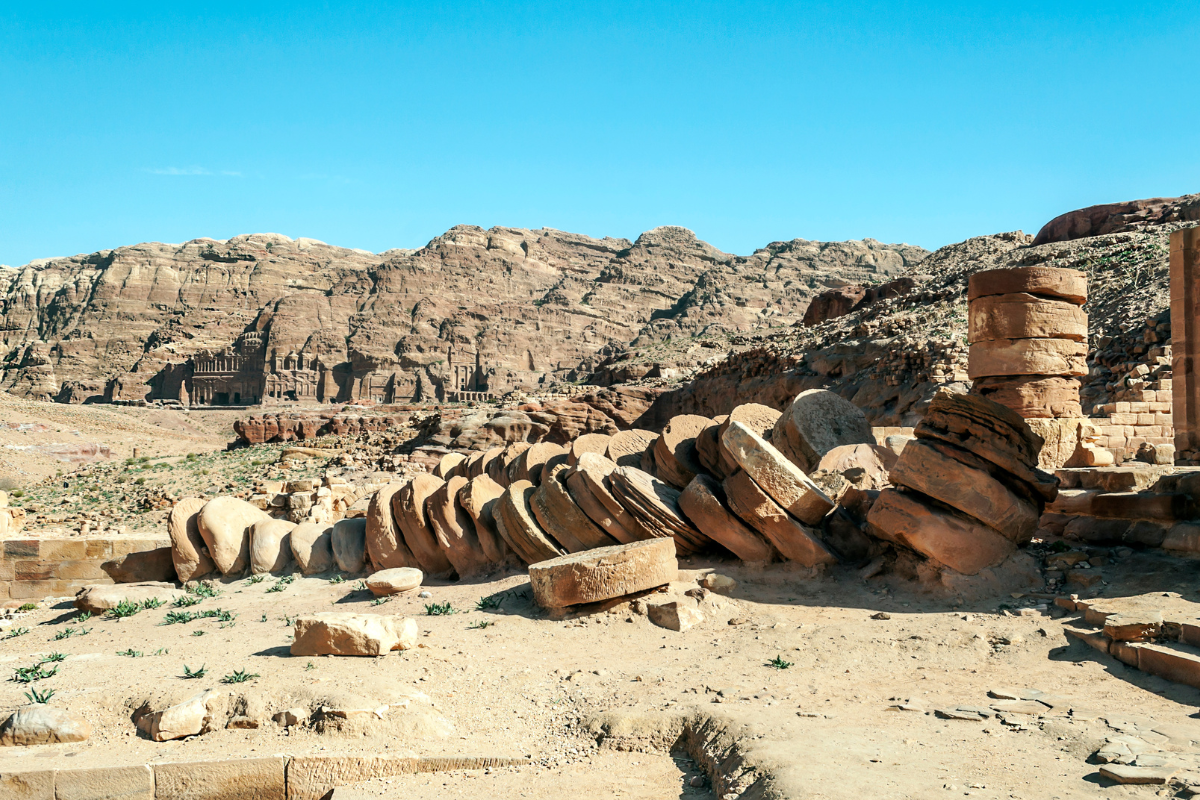The Bible is not only a book of faith and doctrine—it is also a historical document that has stood the test of time. Throughout the centuries, many of its claims have been questioned by critics, yet biblical archaeology has uncovered evidence confirming places, characters, and events narrated in the Old Testament.
Here are five fascinating examples: Canaan and the Canaanites, the Exodus from Egypt, the city of Babylon, the worship of Baal in Moab, and the Gezer calendar. These studies not only support the historical accuracy of the Bible but also enrich our understanding of the world in which the history of God's people unfolded.
Canaan Under the Archaeological Lens
The term ‘Canaan’ appears frequently in the Old Testament referring to a strategic region that connected Egypt and Mesopotamia. Archaeological research shows that Canaan was inhabited by various peoples such as the Amorites, Hittites, and Hivites—as recorded in the Bible (Gen 15:19-21).
Egyptian documents, such as the Amarna Letters and the Merneptah Stele, mention Canaan and its inhabitants, confirming both its existence and geopolitical relevance during the 15th century BC. Findings also reveal that the Canaanites practiced polytheism and worshipped deities such as Baal and Astarte. Their religious culture and practices influenced Israel, as repeatedly shown in the biblical text.
When Did the Exodus Occur? Archaeology and Biblical Chronology
The Exodus is a central event in biblical history. Archaeology provides dates and evidence pointing to a departure from Egypt around 1450 BC.
According to 1 Kings 6:1, Solomon's temple was built 480 years after the Exodus, placing it in the 15th century BC. This date is supported by the Merneptah Stele (1209 BC), which mentions Israel as already established in Canaan—thus requiring an earlier Exodus.
Excavations at Jericho and Hazor reveal widespread destruction in the 15th century, consistent with the biblical account of the conquest. In contrast, evidence from the 13th century does not align with the biblical timeline or the Egyptian rulers mentioned in Scripture. Moreover, findings at Avaris show intense building activity during the proposed period, supporting the biblical narrative of the Israelite enslavement and eventual liberation.
Baal-Peor and the Moabite Deception: Evidence of a Real Spiritual Conflict
Numbers 25 recounts how the people of Israel were led into Baal worship at Peor, triggering divine intervention. Archaeology confirms the existence of Baal worship throughout the region of Moab and Canaan. Findings include a Baal statuette from Ugarit (14th-12th centuries BC), a clay tablet from the same city containing part of one of the two Baal myths, as well as altars and temples dedicated to this deity. These discoveries affirm the cultural backdrop of the biblical account, explaining why it was so easy for Israel to fall into temptation: Baal was a dominant figure—associated with fertility and pleasure—whose cult pervaded daily life.
The texts and archaeological remains show how deeply rooted this type of idolatry was, and how its rejection was more than a religious choice: it was a public declaration of allegiance to the unseen God in a culture dominated by the visible.
Babylon—History, Prophecy and Judgement
Babylon, one of the most mentioned cities in the Bible, was not only real, but its ruins have provided rich archaeological data. Excavations carried out in the 20th century uncovered remnants of the city's double walls, the famous Ishtar Gate, temples, palaces, and the imposing Etemenanki Ziggurat—which many associate with the Tower of Babel. Babylon came to symbolize arrogance, idolatry, and rebellion against God. Texts such as Isaiah, Jeremiah, and Daniel document its downfall as a prophetic fulfillment.
The Gezer Calendar: A Glimpse into Everyday Life in the Bible
Discovered by archaeologist R. A. S. Macalister in the 20th century, the Gezer Calendar is a Hebrew inscription on stone listing agricultural tasks by month. It is one of the oldest known examples of ancient Hebrew writing and reflects how the Israelites structured their agrarian life. Although it does not mention God explicitly, its structure and chronology align with the agricultural calendar that shaped many of the religious festivals in the Old Testament.
This small artifact bridges the biblical text with real, tangible history, showing that the people of Israel had an organized, productive life that was deeply synchronized with the rhythms set by God in His law.
Faith Confirmed by Evidence
Biblical archaeology does not seek to “prove faith” but it does strengthen confidence in Scripture by confirming that the events, places, and characters of the Old Testament have historical grounding. In a world where biblical truth is often questioned, this evidence provides a solid foundation for faith, reflection, and testimony.
At Safeliz, we are committed to publishing books that connect faith with knowledge—such as the Archaeological Bible, which features more than 700 articles written by experts, maps, photos, and QR codes with multimedia content. It is an indispensable tool for anyone seeking to explore the Bible with depth, rigor, and passion.
Discover all our publications at www.safeliz.com





































